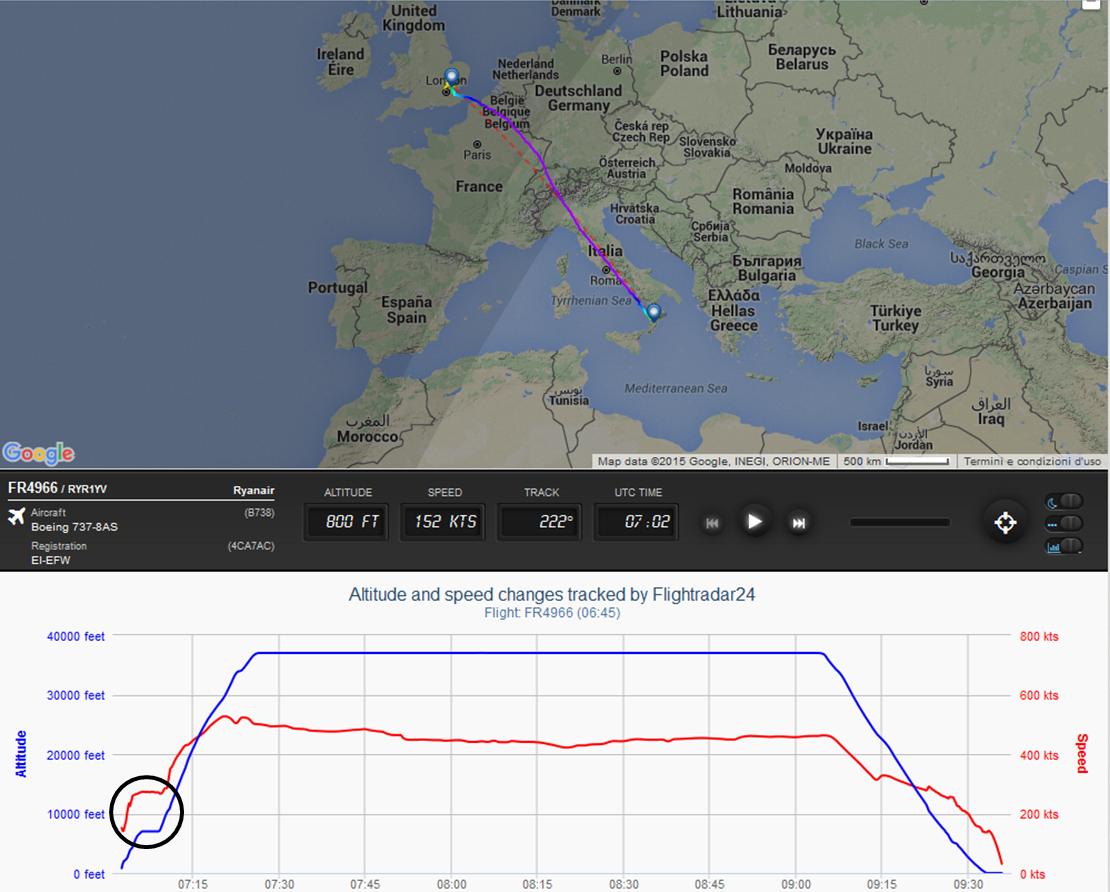Yesterday (Dec 21, 2015), I was on board Ryanair flight FR4966 from London Stansted (STN) to Lamezia Terme (SUF). The aircraft was a Boeing 737-800, registration EI-EFW.
On takeoff, the climbing pattern didn’t seem very regular to me. It was clear that the engines were first running at full power, but then decreased their thrust and our altitude seemed not to increase as it would regularly do. I was certain we were about to return to STN due to some kind of malfunctioning. However, we reached our destination flawlessly.
Later, I checked the climbing pattern, and my impression was confirmed. You can see below that the climbing pattern was initially steep, but at an altitude of approximately 5,700 feet, the aircraft stopped climbing and proceeded at the same altitude for about 5 minutes.
My question: what caused this steady situation? Did the aircraft undergo a malfunctioning that the cabin crew was able to cope with? Or was it just due to the fact that we were overflying London — a congested airspace — and that was our assigned altitude?


